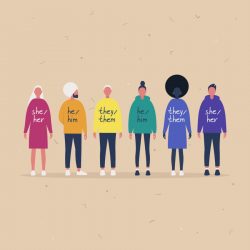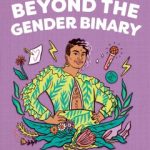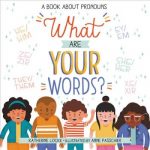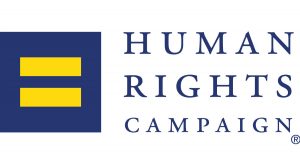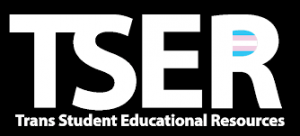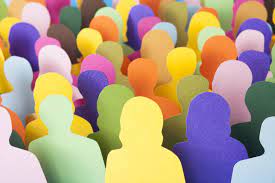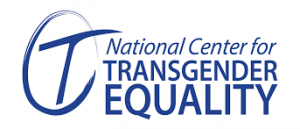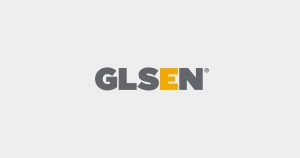We at the Reading Public Library embrace diversity, foster an environment of inclusion, and hope to create a space where patrons feel celebrated and represented. It matters to us that we recognize one’s right to self-identify, and a small part of that is contributing to the understanding and learning of why pronouns matter.
What are gender pronouns?
Pronouns are used in place of your proper name and is one way for a person to share their self-identity. Examples include she/her, they/them, he/him, ze/zir. Some people may use specific pronouns, others may use a blending, and some may choose to use no pronouns at all. Yes, this all may feel confusing or complex, but when in doubt, it’s helpful to ask.
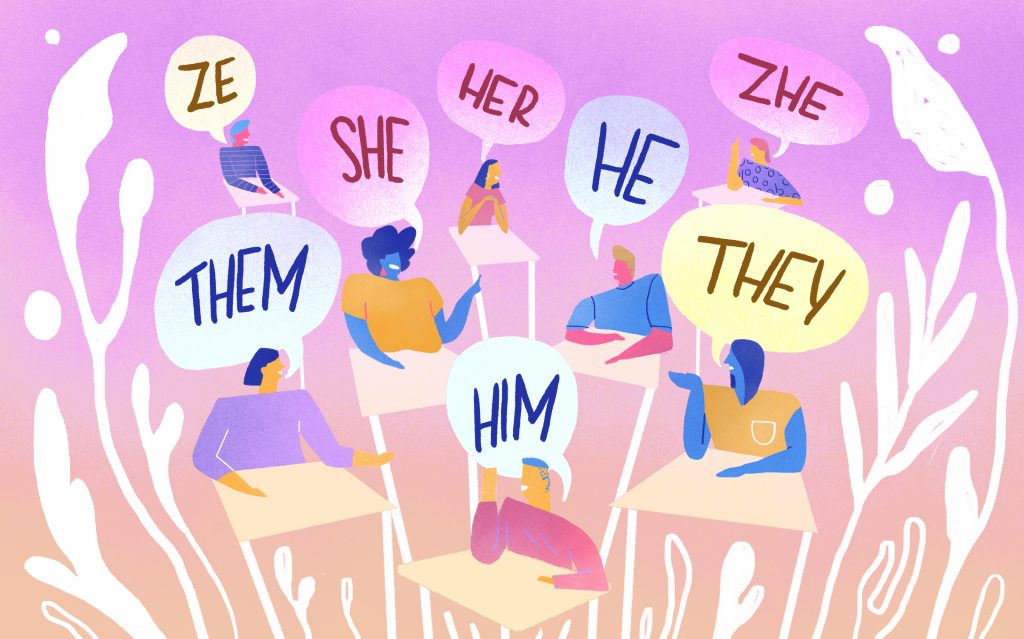
Why is it important?
In English, the most commonly used pronouns (he/she) refer to a person’s gender. If a person is queer, gender non-conforming, transgender, or non-binary, these assumed or assigned pronouns may not neatly fit who they are and can cause stress, anxiety, or hurt. Why?
-
- People’s gender changes over time
- A person’s gender may blend elements of male and female or gender that is altogether different
- A person does not identify with a gender
When you use someone’s correct pronouns or offer opportunities for people to share pronouns, you create an inclusive and respectful environment. It is a simple way to:
-
- Validate a person’s existence
- Normalize discussion around gender
- Avoid assumptions about gender identity
- Create a welcoming, representative space
- Show that you accept that person’s identity
- Be an ally
How to Share Pronouns and How to Ask
A great way to normalize the use of pronouns is to share your own. “Hi! My name is Ally and my pronouns are she/her.” You can write your pronouns on a name tag at an event, share them during class introductions or the beginning of a meeting, or include them in your email. Doing this creates a comfortable space for others to share their pronouns. If you’re not sure how to ask someone their preferred pronouns, MyPronouns.org suggests the following:
-
- My pronouns are they/them. How should I refer to you?
- What pronouns do you use?
- (In a group setting) Let us all share our names and pronouns?
- Don’t require or force the use of pronouns. Invite and encourage.
Some people may have questions or be unfamiliar with sharing pronouns. Sharing pronouns is not a way to ask for private information but a conversation tool to help avoid assumptions about a person’s gender and self-identity based on their appearance or name. And yes, it may feel awkward at first, but eventually it will become a routine way to get to know someone.
Mistakes. They Happen.
Mistakes will happen, especially as we learn. If a mistake is made unintentionally, apologize and correct yourself. This simple gesture to acknowledge the mistake and correct it shows you care. Other tips include:
-
- Avoid making the situation about you
- Work to do better and make the effort to get someone’s pronouns correct in the future
- Check in and create space for sharing. A person’s pronouns may change over time. Allow for opportunity for people to reshare with one another or in a group setting
- Host workshops in your community, school, or workplace
- Talk to non-binary individuals to learn more about who they are
If this all still feels complicated, there are a lot of great resources to deepen one’s understanding and provide ways to practice. It is helpful to remember that you don’t have to understand it all to show respect and support.
Titles Available at the Library:
“Ever wonder what “nonbinary” or “gender nonconforming” really means? Why would someone choose to identify that way? And how the heck do you use “they/them” pronouns for a singular person – isn’t it supposed to be plural? This charming and disarming guide promises to unpack all these questions and more, with a fun, visual infographic approach.”
“Poet, artist, and LGBTQIA+ rights advocate Alok Vaid-Menon deconstructs, demystifies, and reimagines the gender binary.”
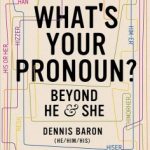 “Renowned linguist Dennis Baron puts [pronouns] in historical context, demonstrating that Shakespeare used singular they; that women evoked the generic use of he to assert the right to vote (while those opposed to women’s rights invoked the same word to assert that he did not include she), and that self-appointed language experts have been coining new gender pronouns, not just hir and zie but hundreds more, like thon, ip, and em, for centuries. Based on Baron’s own empirical research, What’s Your Pronoun? tells the untold story of gender-neutral and nonbinary pronouns.”
“Renowned linguist Dennis Baron puts [pronouns] in historical context, demonstrating that Shakespeare used singular they; that women evoked the generic use of he to assert the right to vote (while those opposed to women’s rights invoked the same word to assert that he did not include she), and that self-appointed language experts have been coining new gender pronouns, not just hir and zie but hundreds more, like thon, ip, and em, for centuries. Based on Baron’s own empirical research, What’s Your Pronoun? tells the untold story of gender-neutral and nonbinary pronouns.”
 “In 2014, Maia Kobabe, who uses e/em/eir pronouns, thought that a comic of reading statistics would be the last autobiographical comic e would ever write…Started as a way to explain to eir family what it means to be nonbinary and asexual, Gender Queer is more than a personal story: it is a useful and touching guide on gender identity–what it means and how to think about it–for advocates, friends, and humans everywhere.”
“In 2014, Maia Kobabe, who uses e/em/eir pronouns, thought that a comic of reading statistics would be the last autobiographical comic e would ever write…Started as a way to explain to eir family what it means to be nonbinary and asexual, Gender Queer is more than a personal story: it is a useful and touching guide on gender identity–what it means and how to think about it–for advocates, friends, and humans everywhere.”
“Ari knows a lot of words for neighbors, including the pronouns each prefers, and with help from Uncle Lior, who always asks “What are your words,” figures out which pronouns–and other words–fit best today.”
 “A picture book that introduces the concept of gender identity to the youngest reader from writer Theresa Thorn and illustrator Noah Grigni. Some people are boys. Some people are girls. Some people are both, neither, or somewhere in between. This sweet, straightforward exploration of gender identity will give children a fuller understanding of themselves and others. With child-friendly language and vibrant art, It Feels Good to Be Yourself provides young readers and parents alike with the vocabulary to discuss this important topic with sensitivity.”
“A picture book that introduces the concept of gender identity to the youngest reader from writer Theresa Thorn and illustrator Noah Grigni. Some people are boys. Some people are girls. Some people are both, neither, or somewhere in between. This sweet, straightforward exploration of gender identity will give children a fuller understanding of themselves and others. With child-friendly language and vibrant art, It Feels Good to Be Yourself provides young readers and parents alike with the vocabulary to discuss this important topic with sensitivity.”
Online Resources:
Click on the image to take you to the connected resource:


